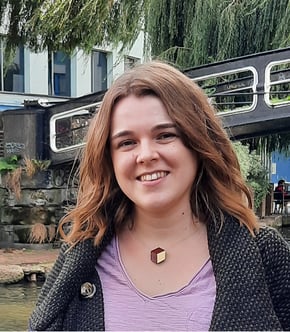Building cities from scratch to make them smart has become a trend in urban planning. Examples such as Masdar City outside of Abu Dhabi, The Line in the Emirates, or The Parks in South Africa show that planners in some countries crave a fresh slate – but does that actually work? Read more about the opportunities that a new city offers, but also the challenges it brings.
The desire for a clean slate
Over the last two decades, new and master-planned cities have emerged at an unprecedented scale, especially in Asia, the Middle East, Africa, and Latin America. According to ArchDaily, there are currently over 150 new cities in the making. Emerging markets in particular seem to like this idea as a strategy to leapfrog towards knowledge economies with smart cities that attract foreign investors and tourists.
While it is not a new development to build cities from scratch – Brasilia and Canberra are examples of new government cities from the 1960s – the recent trend is noteworthy. The wealth behind real estate, the deregulation of economies, and the growing role of smart urban development have kindled the interest of many large corporations. Multinational tech companies like Google, Microsoft, Cisco, and IBM show a keen interest in developing smart cities, from Songdo in South Korea to Eko Atlantic in Nigeria. Special Economic Zones facilitate these ventures, which is a strategy many cities around the world are following to receive favourable legislation and tax incentives.
New cities such as The Line or NEOM are often created as new, self-sufficient urban areas separate from existing cities. In contrast to suburbs or satellite cities, they are purpose-built areas with their own identities and a clean slate. They tend to have a marketing vision with their own brand, and an elevator pitch ready to go. For example, Saudi Arabia’s King Abdullah Economic City markets itself as the city of choice for the young elite, boasting access to “the pristine waters of the Red Sea”, an 18-hole golf course, and a luxurious health and leisure club. In NEOM, autonomous mobility, artificial intelligence, renewable energy, and edutainment are some of the unique selling points.
Laboratories for Future Cities: Starting smart
New cities can act as laboratories for the future of all of our cities. They can showcase the use of renewable energy and the potential of smart technologies, learn from past mistakes, offer more housing, promote walkability and car-free city centres, and bring economic benefits to their countries. Yachay-City of Knowledge in Ecuador shows that planning a green city with a science park and a research-oriented public university can impact national development and culture, helping to rebrand the South American country as “the Silicon Valley of the Andes.”
“Starting smart” is another important opportunity that a new smart city offers. Instead of retrofitting an existing building or city with new technologies, a city built from scratch can integrate technology from the design phase. Technology architects can support the smart strategy, provide a collaborative ecosystem, and adequate technological infrastructure, as suggested in a 2022 report by UN-Habitat on smart city governance. Smart approaches to data collection, the use of artificial intelligence and machine learning from the beginning, and modern cybersecurity can make new smart cities very successful.
Do you want to hear more about Smart Cities? Check out our new Podcast:
🎧 Podcast: How AI is transforming the Smart City landscape 🎧
The dangers of smart new cities: How to deal with inequality?
But does this really work? New cities like Masdar City show that the reality of new smart cities can be very different from their official rationale and vision. The Normal Foster-supported development in the desert outside Abu Dhabi is scarcely inhabited and feels like a ghost town. Promises of renewable energy thanks to solar panels could not be kept since the many sandstorms in the area tend to coat solar panels with sand in the space of a few hours. Autonomous vehicles do roam the city, but there is no practical transport connection from Masdar City to anywhere else yet, so visitors have to arrive by car. In Putrajaya, touted as Malaysia’s “Intelligent Garden City”, just over 90,000 people of the 350,000 inhabitants that were planned have arrived.
Often, announcing the creation of a new city leads to large profits from selling land to developers. But it is proving difficult to meet occupancy goals – also because many units in these new cities are investment properties without inhabitants. Considering that cities should be built for people, the question is who these new smart cities are for. In many cases, they seem to target the economic elite, ignoring features such as mixed-income neighbourhoods, public schools, or accessible public transportation.
At the same time, outsourcing urban planning to the private sector and prioritising gated, securitised environments that exclude the urban poor is very dangerous. While tech companies, developers, and skilled workers benefit from the smart new cities, the question remains how to tackle urban inequalities and provide a good quality of life for everyone in a country or a city?
As SDG 11 recommends, urban planning should serve citizens of all socioeconomic levels rather than being a profit-making mechanism. Importantly, new cities need to address quality of life for everyone, for the educated middle classes as much as for rural migrants. Affordable housing, quality education, good public infrastructure and attractive public spaces are still the tenants of successful urban development.
A more people-centred approach to cities
To achieve the creation of a new city, both Bloomberg and the Guardian offer some interesting guidelines:
- Choose a location that works well and offers basics such as water supply.
- Establish where public and private realms are. Consider streets, public spaces and amenities.
- Set up a way to finance infrastructure. Ideally, new developments should incrementally pay for themselves, ensuring that the supply of land follows demand.
- Think about jobs that will attract a variety of people.
- Beyond these key considerations that lay the groundwork for a land market, for land uses, carbon-neutral infrastructure and more walkable, dense, and well-connected neighbourhoods, too much top-down intervention is not necessarily the best route. The most liveable and popular cities are the ones that develop organically.
A look at some new cities in Africa shows that a more people-centred approach to building smart cities is promising. Developments such as Nairobi’s Konza Technopolis focus on smart technology that is based on citizen participation, inclusiveness, and connectivity. Data in Konza will be accessible to the population to provide information on traffic, emergency warnings, and energy and water consumption. Similar developments like Accra’s Hope City and Vision City in Kigali are ambitious tech-driven cities built close to existing cities, focusing on scalable housing and amenities. In this new model, urban governance is shared between the public and the private sector. The new cities are an addition to existing cities. They value purpose over ego and focus on the quality of life of their residents rather than on profit and attract a mix of people – a truly smart approach.
Explore smart city strategies and solutions in the world's largest smart city network and community. Join now for free to share smart solutions and lessons learned from smart cities with thousands of members and potential collaboration partners.


